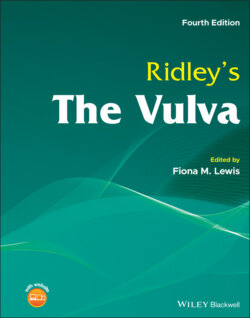Читать книгу Ridley's The Vulva - Группа авторов - Страница 155
Local anaesthesia
ОглавлениеAlthough the use of a prilocaine/lidocaine cream (EMLA®) alone has been reported to allow pain‐free punch biopsy of the vulva [2], further infiltration with lidocaine 1% or 2% is generally used. One recent study does report lower pain scores and a better overall patient experience with topical anaesthesia alone [3]. All were in non‐hair‐bearing sites, and only 5 of 37 were done with a punch biopsy; the rest were done with cervical forceps, which is never helpful for the diagnosis of vulval dermatoses as they do not provide an adequate specimen.
EMLA® applied for about 10 minutes certainly reduces the discomfort of the injected local anaesthesia, but if used, it is vital that the pathologist knows about this as it must be taken into account when interpreting the histology. Some histological features such as pale, swollen keratinocytes, basal cell vacuolation, and basal layer destruction with subepidermal cleavage are related to the use of this preparation and may lead to misdiagnosis [4, 5]. Ultrastructural changes may also be attributable to EMLA and were mistaken for lysosomal storage disease in one series [6].
The local anaesthetic is drawn up with a 21‐gauge needle and then infiltrated with a finer 30‐gauge needle just under the area to be biopsied to produce a weal. The plunger can be withdrawn to check it is not in a vessel, and in general, 1–2 ml of the local anaesthetic is adequate. It is sensible to check that the area is numb before proceeding.
Apart from the use of a topical anaesthetic prior to injection, other methods of reducing the discomfort with injected local anaesthetic include warming it to body temperature and buffering with 8.4% sodium bicarbonate.
